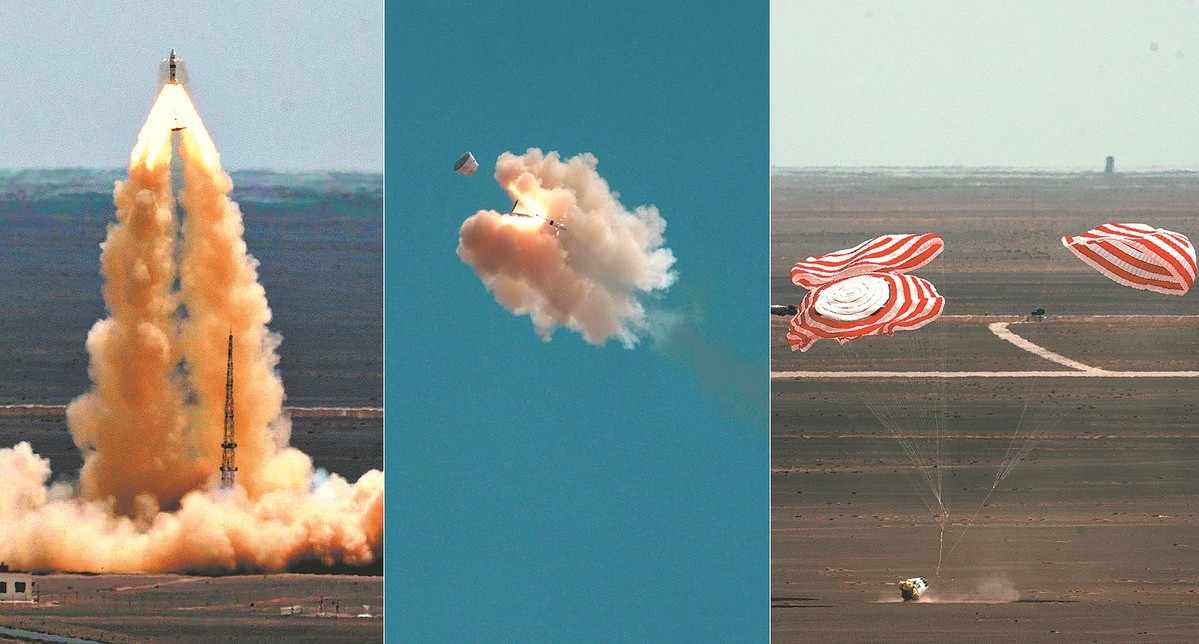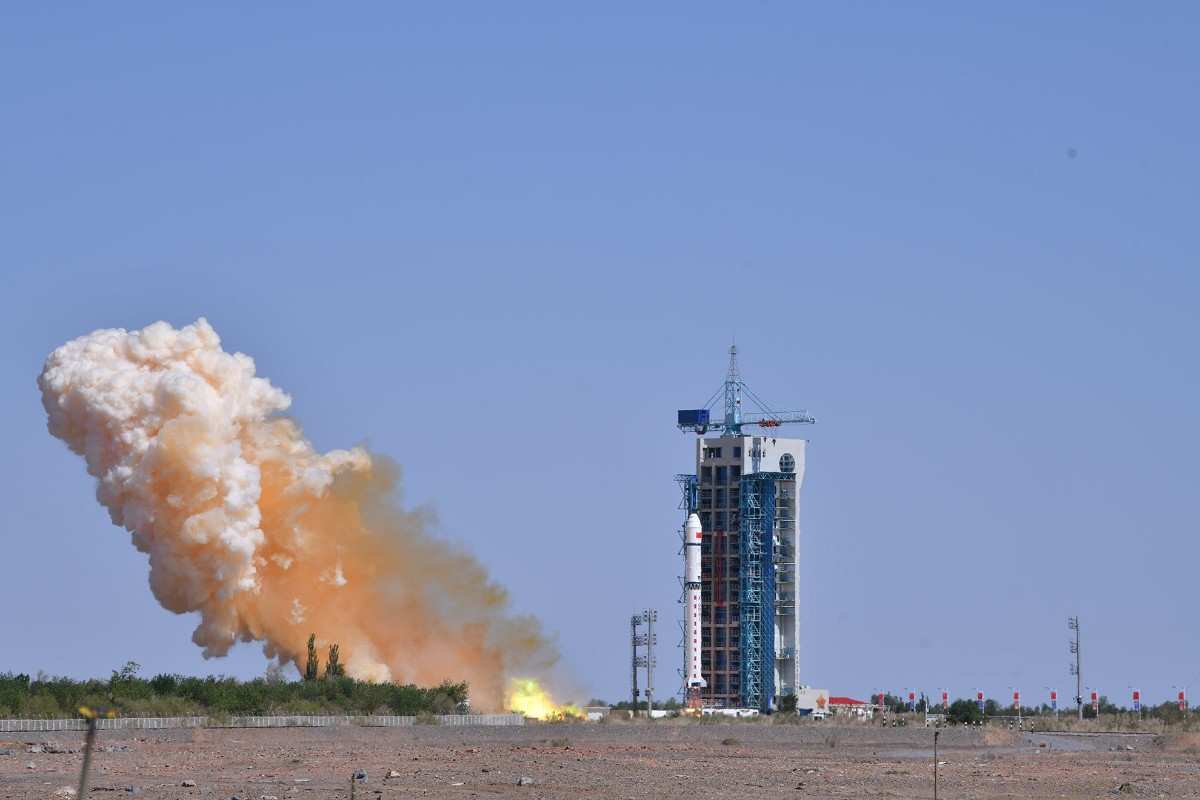China has successfully conducted a zero-altitude escape flight test for its new-generation Mengzhou spacecraft, advancing its manned lunar exploration goals.

China Successfully Tests Mengzhou Spacecraft Escape System at Zero Altitude
Beijing, 18 June 2025 — China has reached a major milestone in its ambitions to send astronauts to the Moon. On Tuesday, the China Manned Space Agency (CMSA) announced the successful completion of a zero-altitude escape flight test of its Mengzhou spacecraft, a critical component of the country’s next-generation crewed lunar exploration system.
Breaking] China successfully carried out a zero-altitude escape flight test of its new Mengzhou spacecraft on Tuesday at the Jiuquan Satellite Launch Center in Northwest China, marking the first such test in 27 years.
The test represents a major breakthrough in the country’s manned lunar exploration program.
The test was conducted at the Jiuquan Satellite Launch Center, one of China’s main spaceports in the Gobi Desert. It marks a significant advancement in validating the emergency escape system of the Mengzhou capsule, which is designed to carry astronauts safely away from the launch vehicle in the event of a critical failure on the launch pad or shortly after liftoff.
What Was Tested
The trial focused on simulating a launch failure at zero altitude — essentially, right on the launch pad. In this scenario, the escape system must activate instantly, detaching the crew capsule from the rocket and moving it to a safe distance within seconds.
According to CMSA, the escape tower performed as expected, guiding the crew module through a controlled separation, flight, and parachute-assisted landing. All parameters were within safety margins, confirming that the system is ready for real-world use.
About the China’s Mengzhou Spacecraft
Mengzhou is China’s next-generation manned spacecraft, designed to support deep space exploration. It can carry up to seven astronauts, though typical missions may involve three to four crew members. Unlike earlier Shenzhou capsules, Mengzhou is equipped with:
- A fully upgraded thermal protection system
- Enhanced onboard computing and life support
- Reusability for multiple missions
- A modular service module for lunar and orbital tasks
The spacecraft is part of a broader effort to land Chinese astronauts on the Moon before 2030.
Part of China’s Lunar Exploration Plan
This successful escape test follows a series of developments in China’s fast-moving lunar ambitions. The Mengzhou spacecraft, along with the Lanyue lunar lander, forms the foundation of the country’s planned crewed lunar landing mission. If successful, China could become the second nation to land humans on the Moon, and the first to do so in the 21st century.
Future tests will include high-altitude escape trials, uncrewed lunar test flights, and finally a full demonstration mission involving both Mengzhou and the Lanyue lander in the next few years.
China’s Mengzhou Spacecraft Test Sucessful what is its Global Impact?
This event signals China’s intent to compete in the next era of space exploration, which is now focusing on long-term human presence on the Moon, resource utilization, and space-based science infrastructure.
As the U.S. and its partners move ahead with NASA’s Artemis program, China’s progress with Mengzhou highlights the emergence of multiple global pathways to the Moon — each pushing the boundaries of human spaceflight.
News Source:-
https://x.com/CNSpaceStation/status/1935150002902602197?t=Fb0BVf0pQv13Z_c67RjT4g&s=19
FAQs About China’s Mengzhou Spacecraft and Escape Test
Q1. What is the Mengzhou spacecraft?
Mengzhou is China’s new-generation crewed spacecraft, developed for future deep space missions, including crewed lunar landings. It is larger and more advanced than the earlier Shenzhou capsules and designed for high safety, longer missions, and partial reusability.
Q2. What was the purpose of the zero-altitude escape test?
The test was conducted to verify that the Mengzhou spacecraft’s emergency escape system can protect astronauts in case of a launch pad or liftoff failure. The system must rapidly pull the crew module away from the rocket to ensure their safety.
Q3. Where was the escape test conducted?
The zero-altitude escape flight test took place at the Jiuquan Satellite Launch Center, located in China’s Gobi Desert. It is one of China’s primary facilities for human spaceflight missions.
Q4. Was the test successful?
Yes. According to the China Manned Space Agency (CMSA), the test was a complete success. The spacecraft’s escape tower activated as intended, and the crew capsule separated, flew, and landed safely under parachutes.
Q5. How many astronauts can the Mengzhou spacecraft carry?
The Mengzhou spacecraft is designed to carry up to seven astronauts, though typical missions may carry fewer, depending on mission complexity and payload needs.
Q6. How is Mengzhou different from previous Chinese spacecraft?
Compared to the older Shenzhou series, Mengzhou features:
- Higher crew capacity
- Improved thermal protection and reentry systems
- Advanced onboard electronics and life support
- Compatibility with lunar missions
- Partial reusability for future cost-effective operations
Q7. What role does Mengzhou play in China’s lunar exploration program?
Mengzhou is a key component of China’s planned manned lunar landing. It will transport astronauts to lunar orbit, where they will transfer to the Lanyue lander for descent to the Moon’s surface. The spacecraft will also bring them safely back to Earth.
Q8. What are the next steps after this escape test?
The next stages include high-altitude escape tests, followed by uncrewed test missions to lunar orbit and, ultimately, a full crewed lunar mission before 2030.
You May Also Like This:-

